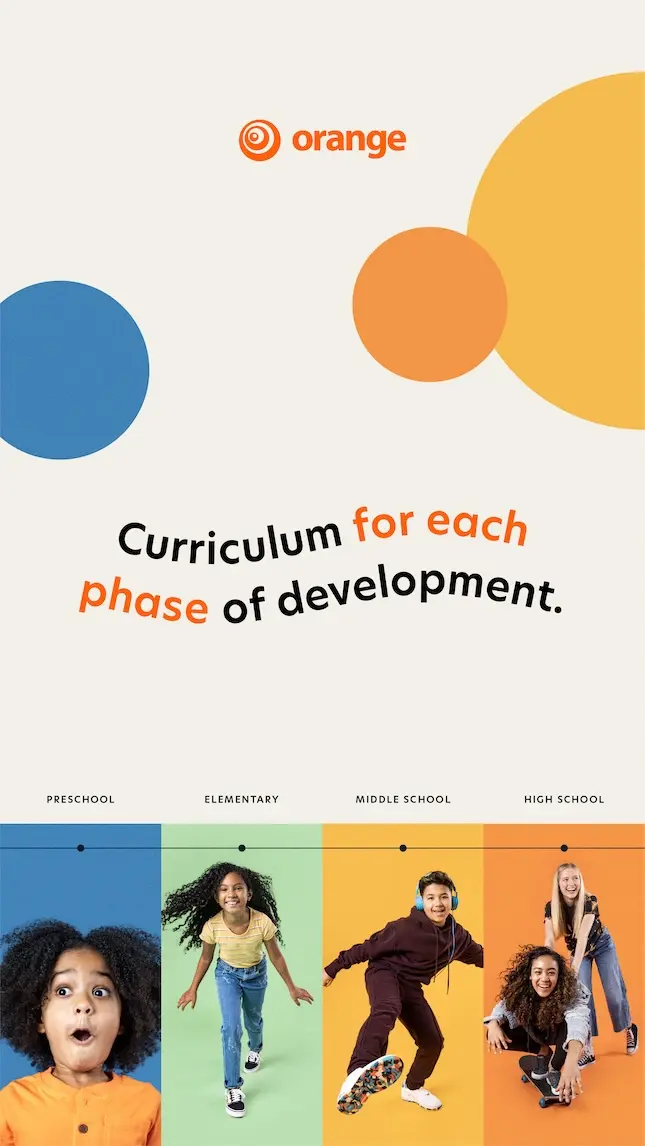If we can agree that both of the following are true . . .
1) Every human is made in God’s image.
2) God has given each of us different abilities.
. . . then we can also agree people learn about God and respond to God in different ways. That’s why making your ministry accessible for everyone is so important. It shows your church how wide and vast God’s family is and sends a message to families affected by special needs that your church is committed to passing along an everyday faith to each and every participant.
However, while you may care deeply about serving families with special needs, we know you may be wondering how to start a Special Needs Ministry. The first step is developing the right model. While there are many possibilities, there are some basic models you can start with, whether you’re well-established or just getting started. Here are three to consider!
Inclusion Model
A simple way to think of inclusion is providing opportunities for children with special needs to learn alongside their typically developing peers with the support and resources they need to thrive in those environments.
The inclusion model is a common starting place for many churches. The main reason is because the goal is to include kids with disabilities in the existing ministry. It does not require additional rooms but rather a few trained volunteers to be “buddies” (1:1 leaders), minor tweaks to curriculum, and a few extra supplies.
Inclusion is sometimes thought of as leveling the playing field so everyone can fully participate. Some children may need the support of a 1:1 volunteer, noise-canceling headphones, or a visual schedule. Others may simply thrive with activities that require less movement. Or with the option to take a break from the group when needed.
With Orange Kids Curriculum, each Small Group plan is edited through the lens of having a child with a disability who attends small group with their peers but may struggle with some components of the activities. We suggest providing the leader of this type of group with the SN Adaptations version of the Small Group plan. That way, they can make adjustments for the entire group. You can read more about the Special Needs Adaptations here.
Wondering what the volunteer expectations should look like for a 1:1 buddy? We’ve got that covered! Check out the Kids Ministry Volunteer Job Description for Assigned Leader for Kids with Special Needs in our latest Volunteer Job Descriptions resource.
Keep in mind the inclusion model can look different from one church to the next. Let’s be honest, even from one child to the next. It’s all about figuring out how to transform your ministry environment to allow a student with special needs to participate.
Self-Contained Model
While inclusion may be the goal, there are times when that may not be best for an individual with disabilities. A separate environment allows you to tailor the room’s design, communication, sensory output, and schedule to meet the child’s needs.
The self-contained model would work best for churches with a dedicated space for kids with special needs. This space would have volunteers specifically trained for and assigned to this area. The curriculum requires a more customized approach. This ensures the lessons are designed to reach the needs and honor the preferences of those in the room.
Some churches prefer to start here for many reasons. They may not yet have the volunteer team for 1:1 leaders. Perhaps they are still developing an inclusive culture. Or they might want to provide the safest environment for certain students. A space designated for accommodating children with disabilities also allows for teaching the Bible story in a way best suited for the children in the self-contained classroom.
With Orange Kids Curriculum, the Special Needs Resource Kit offers tips, ideas, and best practices for adapting each curriculum segment. Also, alternate activity suggestions and links to additional Special Needs resources (from Orange and elsewhere). This way, children in this model hear the same message as all kids with the content adapted to their needs.
To get an idea of what a volunteer in the self-contained setting may be expected to do, check out the Kids Ministry Volunteer Job Description for Classroom Leader for Kids with Special Needs that is part of our Volunteer Job Descriptions bundle.
Since inclusion is always the goal, consider having times when the kids can go out into other environments (even if just for a few minutes). You can also consider inviting a small group of typical children to join the self-contained environment. They can join with their leader or simply come to experience the setting alongside their peers with disabilities.
Hybrid Model
Take the inclusion and self-contained models. Put them together, and you’ve got a hybrid model. The hybrid model means having options for full inclusion and a self-contained environment. It means being ready to support a kid with special needs in your mainstream activities while also offering a specialized environment when needed.
This is likely the ultimate goal for your Special Needs ministry model when possible. The hybrid model provides spaces for any individual with a disability to belong. It shows families that your church is for everyone.
Hybrid Volunteer Teams
This does mean two types of volunteer teams. Those serving in the self-contained setting and those serving outside it as 1:1 buddies. Hybrid also means a few different approaches to Bible story communication and small group activities. Remember with Orange Kids Curriculum, you can make the most of the Small Group Plans adapted for Special Needs. You can pull ideas from the Special Needs Resource Kit to meet the needs of every child in your ministry.
The hybrid model also provides the flexibility of starting a child in one environment and working towards moving them into the other. Children can experience both options when appropriate. For example, inclusion for large group and self-contained for small group or vice versa.
Choosing the best model for your church will likely depend on your church’s current culture, physical space options, volunteer availability, budget limitations, and more. No matter which model you choose, start somewhere. If you start with the inclusion model, you are halfway to hybrid and can add things as you grow and learn.
Barriers for Starting a Special Needs Ministry Model
Here are some common mindset barriers to getting started:
What if we don’t have the experience?
Find experts in your church or your larger community. They don’t have to serve but can consult with you and give you guidance.
How do we know how to talk with parents?
Every parent simply wants to know you see their child as important, valued, and loved. A posture of learning will go a long way.
Won’t focusing so much on one take away from the others? And what about distractions?
As your ministry develops an inclusive culture, kids will learn that “fair” does not mean equal. Everybody gets exactly what they need. When surrounded by differences, we grow in empathy and understanding of how God made us.
See, If we can all agree on this . . .
Every person is made in the image of God.
. . . then we must ask how our ministry models communicate this truth to every family. To truly meet every child right where they are, our churches need a strategy. One for welcoming, including, and ministering to children with disabilities and their families. Chances are, you are already doing a great job of creating a community for kids to develop an everyday faith. So what can do today to start making that ministry accessible to everyone?



